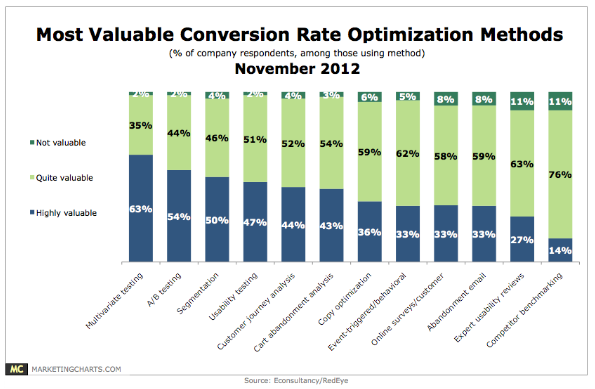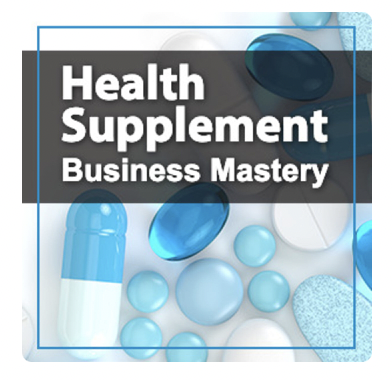
Econsultancy’s “Conversion Rate Optimization Rate Report 2012″ has some pretty insightful information about what methods practitioners are using to improve conversion rates.
Among the top are obviously multivariate and A/B testing. These are not really methods, at least not methods that are valuable as a takeaway , without testing you can’t really optimize anything.
Among the other methods surveyed there is a very good mix of qualitative methods and quantitative methods. Usability testing and Online Surveys are mount the qualitative methods to understand the voice of the customer to put context around the quanitative data of customer journey (click through) analysis and cart abandonment analysis.
I would have liked to see design or layout listed but the lack of it and the sole presence of copy optimization shows the industry is still thinking a bit small in terms of what to test and how to leverage bigger gains.
Competitor benchmarking received the lowest assessment of value. Personally I think that’s a good thing and an indication that the conversion optimization as a practice is maturing. Benchmarking against others is one of those early questions beginning companies usually ask. The better perspective is to benchmark against yourself and your own data, not against others.
Segmentation coming in high on the list coupled with the fact that this is an 8% increase from last year is also a good indicator that marketers are beginning to get more advanced and the field of conversion is finally maturing. Perhaps 2013 will actually be the year of conversion.
About the Data: This is Econsultancy’s fourth Conversion Rate Optimization Report carried out in association with RedEye. There were almost 900 respondents to the research request, which took the form of an online survey in July and August 2012. Respondents included both client-side (in-house) organizations who want to improve their conversion rates (59%), and agencies, vendors or consultancies (supply-side) who are involved in trying to improve conversion rates for their clients (41%). This article covers responses from the client-side only.
77% of company respondents are based in the UK, and another 12% are in other parts of Europe.
Discover the 3 funnels that can help your health supplement business succeed.

Listen to the Health Supplement Business Mastery Podcast for for dietary supplement entrepreneurs and marketers.




1 comment
Comments are closed.